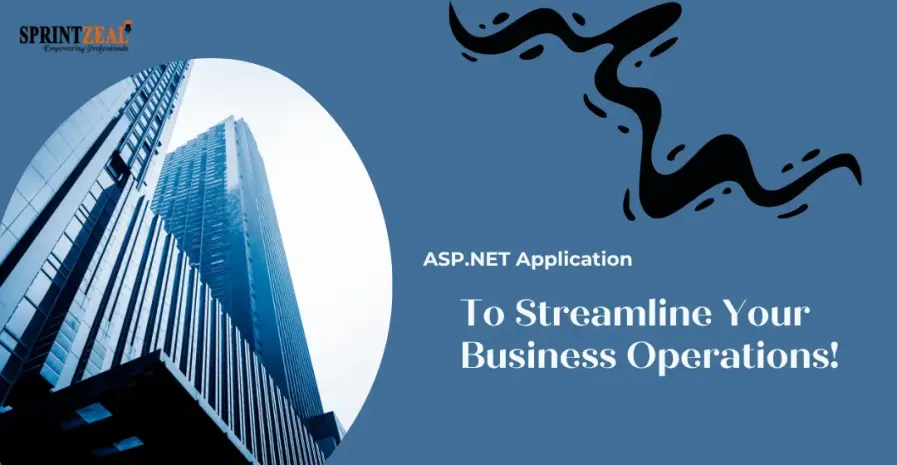Most Frequently Asked Mainframe Interview Questions 2025
-
 By Rai Sinha
By Rai Sinha - Published on Sep 23 2025

In this extremely competitive tech scenario with various emerging technology trends , it's understandable that mainframes might not make big headlines like certain new approaches and arenas in newer tech, yet still they quietly run the world's most critical systems from banks to airlines.
Along with this, even though they are labelled as "legacy," they still remain powerful and very much in demand.
Through this blog, we have made a list of all the important mainframe interview questions that will guide you to prepare efficiently for the mainframe interview questions.
Table of Contents
Basic Mainframe Interview Questions for Beginners
Here we have added all the important basic mainframe interview questions for your reference
1. What do you mean by DRDA?
DRDA - “Distributed Relational Database Architecture”
It's a framework that allows operations to work with databases located in different places, treating them as if they belong to a single unified system. With this, its much easier to manage data irrespective of where its stored.
2. Where is this mainframe technology mostly used?
Mainframe technology is he core of insurance and banking industries. It's particularly useful for supporting important operations like account and real-time sale processing.
3. How do total functions work in DB2, and when should you use them?
In DB2, aggregate functions computates a group of rows to return a single result. Instead of working with individual records, the aggregate functions summarizes the data which makes it ery helpful for generating insights from large datasets.
Common Aggregate Functions
COUNT(*)—Returns the total number of rows in a table.
SUM(column_name) – Adds up all the values in a specific column.
AVG(column_name) – Calculates the average value of a column.
Maximum(column name) – Finds the loftiest value in a column.
MIN(column_name) – Finds the smallest value in a column.
Example
SELECT AVG(perk) FROM Hand;
This query returns the average perk quantum for all workers.
When to Use?
Aggregate functions are high applied in tasks like reporting and analytics. It is often sometimes used for business intelligence when tracking performance with respect to trends.
4. How do you differentiate between supercomputers and mainframes?
Supercomputers are heavy task handling machines, designed to allocate and handle complex computations at a very high speed.
On the other hand, Mainframes are simplified and optimized to handle large volumes of data with great speed.
This is one of the important mainframe interview questions that can be anticipated during the interview process.
5. What are some downsides or challenges of using mainframe techno?
Although mainframes are dependable and important, there are some challenges that organizations should be aware of:
High Costs—
Mainframe systems are quite expensive to buy, license, and maintain.
Shortage of talent—
Finding good mainframe professionals can be a bit challenging as newer technologies take further attention.
Lower Inflexibility—
Mainframes aren't as adaptable to newer programming languages and development tools compared to ultramodern systems.
Power operation—
Operating a mainframe system at scale consumes a lot of electricity, which can increase both environmental impact and functional costs.
6. In terms of architecture, what difference does supercomputers have over mainframe computers?
Supercomputers and mainframes serve their own different purposes.
Purpose—
Supercomputers are used for complex scientific computations, while mainframes are used for processing large-scale business deals.
Architecture—
Supercomputers use thousands of resemblant processors to perform calculations quickly, whereas mainframes use a centralized processing model for data-heavy tasks.
Use Cases—
Supercomputers support operations such as climate modeling and molecular simulations.
Mainframes are highly applicable in the banking and telecom industries.
Speed Processing—
Supercomputers concentrate highly on raw speed, while mainframes concentrate on stability and handling multiple users contemporaneously.
Operating System—
Supercomputers frequently use technical operating systems like Cray Linux, while mainframes generally run z/OS.
7. What's QMF, and its purpose in mainframe systems?
QMF stands for Query Management Facility.
QMF is a tool built by IBM which analyses data in DB2 databases.
User-friendly interface—
It provides a menu-driven approach, making it accessible for non-programmers.
Report Generation—
Users can generate structured reports using a DB2 table data.
Data Analysis—
Helps associations make data-driven opinions by efficiently processing large datasets.
Graphical output—
Users can map query results and visualize these in graphs.
This is also another important mainframe interview questions that can very much be expected during the interview process.
8. What are many of the tentative statements that are present in the COBOL language?
The tentative statements in COBOL include
- Relation condition
- concerted condition
- Negated condition
- IF condition
9. What do you know about mainframe computers?
Mainframe computers are important systems designed to handle and process huge volumes of data efficiently.
Mainframe computers have multiple processors supporting large amounts of memory. This allows them to act as a CPU for multiple terminals. They're mainly designed to manage complex operations and support thousands of users at the same time, frequently dealing with data on the scale of petabytes.
The term “mainframe”, as the mane suggests is referred to as the largest physical frame that houses the system’s main processor’s memory.
Nowadays, mainframes are used in multiple organization fields like banking, e-commerce, and education. Most highly used where real-time data processing is the key. This is so important because of the reliability and security issues.
This is also one of the important mainframe interview questions.
10. What Are the Types of JCL Statements Used to Run a Job?
In Job Control Language (JCL) , there are three main types of statements used to define and run a job
Job Statement This statement provides information about the job itself, including its name, precedence, and accounting details.
EXEC Statement This defines each step within the job.
Still, multiple superintendent statements are used, each specifying the program or procedure to execute if a job has multiple ways.
DD (Data Definition) Statements These describe the input and output data sets needed for each step.
They specify details like file names, storage location, and access methods.
Together, these statements guide the system in executing jobs efficiently, step by step, with the right data at the right time.
11. Why is Index Faster than Subscript?
Indexing is generally faster because it directly points to the memory position of an element in an array. This gives systems the access to the data incontinently without additional steps.
In discrepancy, a subscript indicates the position of an element, which the system must translate into a memory address during prosecution.
This redundant computation takes further time, making subscripts slightly poky.
12. Dynamic Linking and Static Linking, how are they achieved?
Static linking requires the calling program to link directly to the subroutine. Where as in dynamic linking, they exist as separate modules. NODYNAM or DYNAM, are he link edit options to achieve both types of linking.
13. Define JCL.
JCL - “Job Control Language” is a programming language used to control the execution of programs on mainframe systems. It defines how jobs are structured, what coffers they bear, and how they are.
14. What do you understand by self-referencing constraints?
Self-referencing constraints are rules applied within a table to control how a row can relate to another row in the same table. They’re frequently used when a column (generally a foreign key) refers back to the table’s own primary key.
To maintain data integrity, conduct like omission must be handled precisely. For illustration, if the DELETE waterfall option is set, deleting a row will automatically spark the omission of all affiliated rows that source it; this process continues recursively.
This makes sure that no orphaned or inconsistent data remains in the table.
15. How many ways can parameters be passed between programs?
There are substantially two common ways to pass parameters between programs or functions. One is Call by Value, where a copy of the factual data is transferred so any changes made don’t affect the original value.
The other is Call by Reference, where the memory address of the data is passed rather, allowing direct access and modification of the original value.
Each system serves a different purpose based on the data handling methods.
Mainframe Interview Questions for Intermediate-Level
Here, we have made a list of all the important intermediate-level mainframe interview questions for your guidance.
16. Using what methods can you pass parameters between COBOL programs?
In COBOL, programs frequently need to partake in information, and they do this through different parameter-passing ways. Some of the most commonly used methods include
LINKAGE SECTION This allows a subprogram to pierce data passed from the main (calling) program. It acts like a ground for variable sharing.
CALL USING Statement Parameters are explicitly passed from one program to another. For illustration
CALL 'SUBPROG' USING EMP-NAME, EMP-ID.
Then, the calling program sends specific variables to the subprogram.
RETURNING Clause (Introduced in COBOL 2002)—This point lets a subprogram shoot a value back to the calling program after it finishes processing.
External Data Files—Two or more COBOL programs can change information by reading from and writing to the same file.
Temporary Storage Ranges (CICS Surroundings)—In online COBOL operations, especially under CICS, temporary ranges are used to store and pass data between programs.
These methods make COBOL programs flexible and capable of working together efficiently, whether in batch jobs or real-time operations.
17. What Happens If Both STEPLIB and JOBLIB Statements Are Used?
In JCL, both JOBLIB and STEPLIB are used to tell the system where to find the programs it needs to run, but they work a bit differently in terms of compass and inflexibility.
JOBLIB is placed right after the JOB statement and applies all the way in the job. Suppose of it as a global setting for the entire job. Still, there is a limitation: you cannot use JOBLIB inside cataloged procedures.
On the other hand, STEPLIB works at the step position. You define it within a specific step, and it applies only to that step. It’s more flexible because it can be used inside entered procedures.
Now, if both STEPLIB and JOBLIB are present, the system will always give preference to STEPLIB for that particular step. In other words, JOBLIB will be ignored for any step that has its own STEPLIB
18. Brief me about JES in Mainframe. And explain its relation to job execution?
JES, short for Job Entry Subsystem, is an essential part of IBM mainframe systems. It's responsible for managing how jobs are entered, listed, and executed. You can think of it as the business regulator for jobs submitted to the mainframe; it makes sure that everything runs easily and is in the right order.
Important functions of JES
Accepts jobs and places them in a queue for processing
Manages important resources such as memory, CPU, and storehouse to run each job
Handles spooling, which takes care of input and affair operations
Produces job logs and error reports once the job is complete
Types of JES
JES2 – Ideal for lower or simpler systems where introductory job operation is enough
JES3 – Designed for larger surroundings, offering centralized control and more advanced scheduling features
illustration
/ JOB1 'JOB(ACCT),'TEST JOB', CLASS = A
// STEP1 superintendent PGM = COBOLPROG
In this illustration, JES receives the job, ranges it up, assigns the necessary system resources, and oversees the job’s prosecution. Once done, it outputs all the generated error messages while running.
This is also one of the important mainframe interview questions that can be very much expected during the interview process.
19. How does paging work in memory?
Paging is a memory operation technique that is used to efficiently handle how data is penetrated and stored. To feed CPU with the required data, it first looks for the main memory (RAM). Still, the system fetches it from the secondary storage—generally the hard drive—in fixed-size blocks known as pages if the data is not there.
Each page fits into a frame in physical memory, but these frames do not need to be right next to each other—they can be scattered throughout RAM. This inflexibility helps the operating system use memory more efficiently.
By loading only the needed runners into RAM instead of the entire program, paging allows for quicker data retrieval from the hard disk and ensures smoother performance, indeed when running large operations.
20. Do you consider COBOL as a structured programming language? If yes, why so?
Yes, COBOL is incompletely structured but not completely modular like ultramodern languages.
Structured Features
Uses DIVISIONS and PARAGRAPHS for association.
Supports PERFORM UNTIL circles and IF-ELSE constructs.
Encourages modularization through subprograms (CALL USING).
Non-Structured Aspects
Heavy reliance on GO TO (considered bad practice).
Flat train processing rather than object-acquainted paradigms.
COBOL’s structure is mantanable enough but it lacks modular capabilities.
This type of COBOL mainframe interview questions are also very important and can be expected as well during the interview process.
Mainframe interview questions for advanced level
Now, we have made a list of all the important mainframe interview questions for the advanced level.
21. What functions of DB2 supports large-scale data operationin mainframe systems?
DB2 is a relational database management system (RDBMS) designed to support multiple users and handle high volumes of data. It's specifically designed for bsuinesses who prioritize speed and scalability with trustability.
Key Functions of DB2
Data integrity—
DB2 maintains strong referential integrity, ensuring connections between tables stay harmonious and accurate.
High availability—
With DB2 Data participating, multiple systems can work together, offering flawless access and failover support for critical operations.
Indexing & Query Optimization—
DB2 uses advanced indexing ways, like clustered indicators, to boost query performance and recoup data quite fast.
Example DB2 Query
SELECT EMP_ID,
22. What's the significance of the DCB parameter in DD statements?
The DCB (Data Control Block) parameter is a critical part of a DD (Data Definition) statement in JCL. It defines the physical parcels of a dataset, especially when the dataset is being created during the job. Without it, the system may not know how to handle the data properly.
Two generally used DCB attributes include
LRECL (Logical Record Length) specifies the maximum length of each record in the dataset.
RECFM (Record Format) defines the structure or format of the records as similar to fixed, variable, or blocked.
By using the DCB parameter, you are telling the system exactly how the data should be organized and reused, ensuring proper management and continuity across programs.
This is also one of the important mainframe interview questions that can be expected during the interview process.
23. What functions of DB2 support large-scale data operation in mainframe systems?
DB2 is IBM’s important relational database operation system (RDBMS), specifically designed to handle large volumes of data while supporting multiple users at the same time. It plays a very important part in enterprise-position mainframe surroundings where speed, accuracy, and trustability are essential.
Core Functions of DB2
Data Integrity—
DB2 maintains consistency across related tables by administering referential integrity, ensuring data stays accurate and dependable.
High Availability—
With DB2 Data participating, workloads can be distributed across multiple systems, allowing for resemblant processing and minimizing time-out.
Effective Querying—
Advanced indexing styles, like clustered indicators, allow DB2 to quickly detect and recoup data, even in massive datasets.
Example Query
SELECT EMP_ID, EMP_NAME FROM workers WHERE DEPT_ID = ' HR';
This SQL query pulls up the ID and name of workers working in the HR department—quickly and efficiently.
DB2 is designed for performance, scalability, and data protection, which is why it’s extensively used as the backbone of enterprise databases on mainframes.
24. How do you pass return values or impulses from COBOL to JCL?
In COBOL programs, you can communicate results back to JCL using the special keyword RETURN-CODE. This variable acts as a ground, allowing the COBOL program to shoot a status or outgrowth code back to the JCL that called it.
It’s generally used to indicate how the program ended for example
0 generally means successful execution.
4, 8, or 12 frequently gesture warnings, crimes, or serious failures
This is one of the important COBOL mainframe interview questions that you must prepare properly for the interview process.
You can set the RETURN-CODE in your COBOL sense depending on how you want to flag the result of a particular operation. Once the program finishes, JCL can also use that code in tentative processing (e.g., IF also/additional sense) to decide what steps to run next.
This medium is essential for designing controlled, decision-grounded batch processing workflows between COBOL and JCL.
25. What's the significance of coding COMMITS in batch programs?
Including COMMIT statements in batch programs is very important for performance and data integrity. A COMMIT basically marks the end of a logical unit of work; it tells the system to save all the changes made up to that point and release any locks held on the data.
Still, if a commodity goes wrong during the execution process, the system has to roll back all the changes made since the program started if a program doesn’t include regular COMMITS. This can significantly increase recovery time—occasionally taking two to three times longer than the factual program execution.
On the other hand, with periodic COMMITS, only the most recent set of changes would need to be rolled back, which is important, brisk, and more effective.
In short, using COMMITS in an efficient way helps manage users more, reduces locking issues, and improves overall performance and recoverability of the batch job.
Now, since we have gone through all the important Mainframe interview questions, let’s look at some tips that will be quite beneficial to prepare efficiently for the interview process.
Tips to prepare for Mainframe interview questions
Read up on all the important concepts—
One of the most important things that you must remember while preparing for the mainframe interview questions is to read up and brush up on all the important and key topics. This mostly means you should prepare efficiently and master all the important fundamentals, such as JCL and file handling.
Practical knowledge and relevant skills—
You must prepare for the mock interviews and try to gain relevant practical knowledge on the key concepts.
Showcasing experience in the sphere of project management—
You must remember to explain all the technical problems in a very simplified manner and at the same time detail your projects and explain about your potential and passion in this specific field.
Thus, these tips will surely help you to prepare efficiently for the mainframe interview questions and help you achieve success in your career path.
For more such blogs, subscribe to our newsletter.
Subscribe to our Newsletters
Popular Programs
CCNP® - Cisco Certified Network Professionals
Live Virtual Training
- 4.8 (741 + Ratings)
- 51k + Learners
CCIE® Enterprise Wireless - Cisco Certified Internetwork Wireless
Live Virtual Training
- 4.2 (789 + Ratings)
- 45k + Learners
CCIE® Data Center V3.0 - Cisco Certified Internetwork Expert Data Center
Live Virtual Training
- 4.8 (785 + Ratings)
- 55k + Learners
CCDP® - Cisco Certified Design Professional
Live Virtual Training
- 4.6 (763 + Ratings)
- 54k + Learners
Trending Posts
CompTIA CASP Certification Benefits
Last updated on Jul 27 2022
How to Become a System Administrator: Expert Guide for 2025
Last updated on Jan 30 2025
How a Custom ASP.NET Application Can Streamline Your Business Operations!
Last updated on May 13 2025
MVC Interview Questions and Answers 2025
Last updated on Sep 19 2025
Time-Saving Tech Tools Every Professional Should Be Using
Last updated on Apr 17 2025
Network Analyst Interview Questions and Answers in 2024
Last updated on Oct 6 2023
Categories
- Other 62
- Agile Management 56
- Cloud Computing 50
- Project Management 170
- Big Data 58
- Business Management 79
- Digital Marketing 73
- IT Service Management 29
- Programming Language 47
- AI and Machine Learning 66
- IT Security 108
- Quality Management 77
- IT Hardware and Networking 25
- Microsoft Program 4
- Workplace Skill Building 11
- Risk Management 9
- Information Security 8
- Leadership and Management 7
- Corporate Training and Development 1
Trending Now
Cisco Certification List – Top certifications to advance in your career
ArticleCompTIA CASP Certification Benefits
ArticleCompTIA Interview Questions and Answers 2025
ArticleCCNA Interview Questions and Answers in 2024
ArticleNetwork Analyst Interview Questions and Answers in 2024
ArticleSystem Analyst Interview Questions and Answers 2025
ArticleSystems Administrator Interview Questions and Answers 2024
ArticleNetwork Engineer Interview Questions List (2025)
ArticleHow to Become a Network Engineer?
ArticleCompTIA Certifications List - Top 5 CompTIA Certifications to Explore
ArticleCCNA vs CCNP - Which Cisco Certification is Right for you?
ArticleCompTIA CASP+ and CompTIA PenTest+ Exams Retirements
ArticleCompTIA A+ Certification Latest Exam Update 2025
ArticleNetwork Scanning: How it Works, Tools, Types, and Benefits
ArticleNetwork Analyst: How to Become, Skills and Career Guide
ArticleHow to Become a System Administrator: Expert Guide for 2025
ArticleHow to Become a Systems Analyst? Step-by-Step Guide
ArticleTime-Saving Tech Tools Every Professional Should Be Using
ArticleHow a Custom ASP.NET Application Can Streamline Your Business Operations!
ArticleThe Ultimate Guide to Top Proxy Service Providers (2025)
ArticleHow to Recover Hard Drive Data After Accidental Formatting or Deletion: A Guide for IT Professionals
Article7 Benefits of Moving to Digital Maintenance Tracking for Fleets
ArticleMVC Interview Questions and Answers 2025
ArticleExcel Skills Proficiency Guide: Beginner to Advanced Levels
Article

















